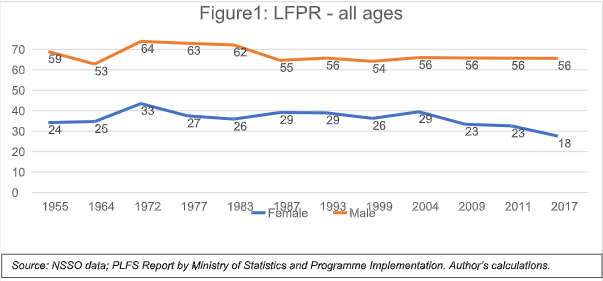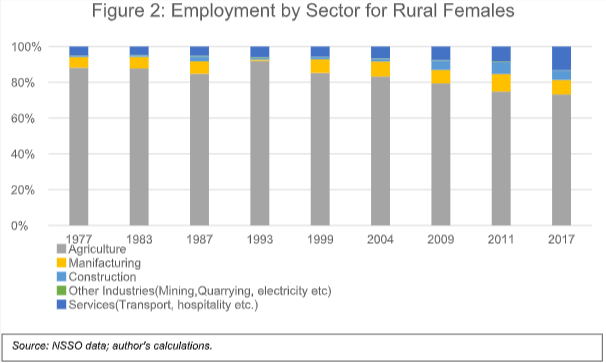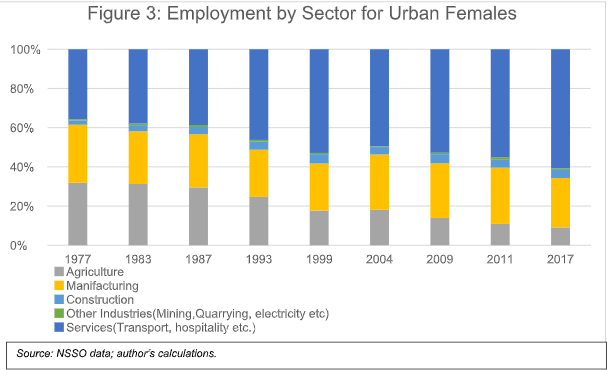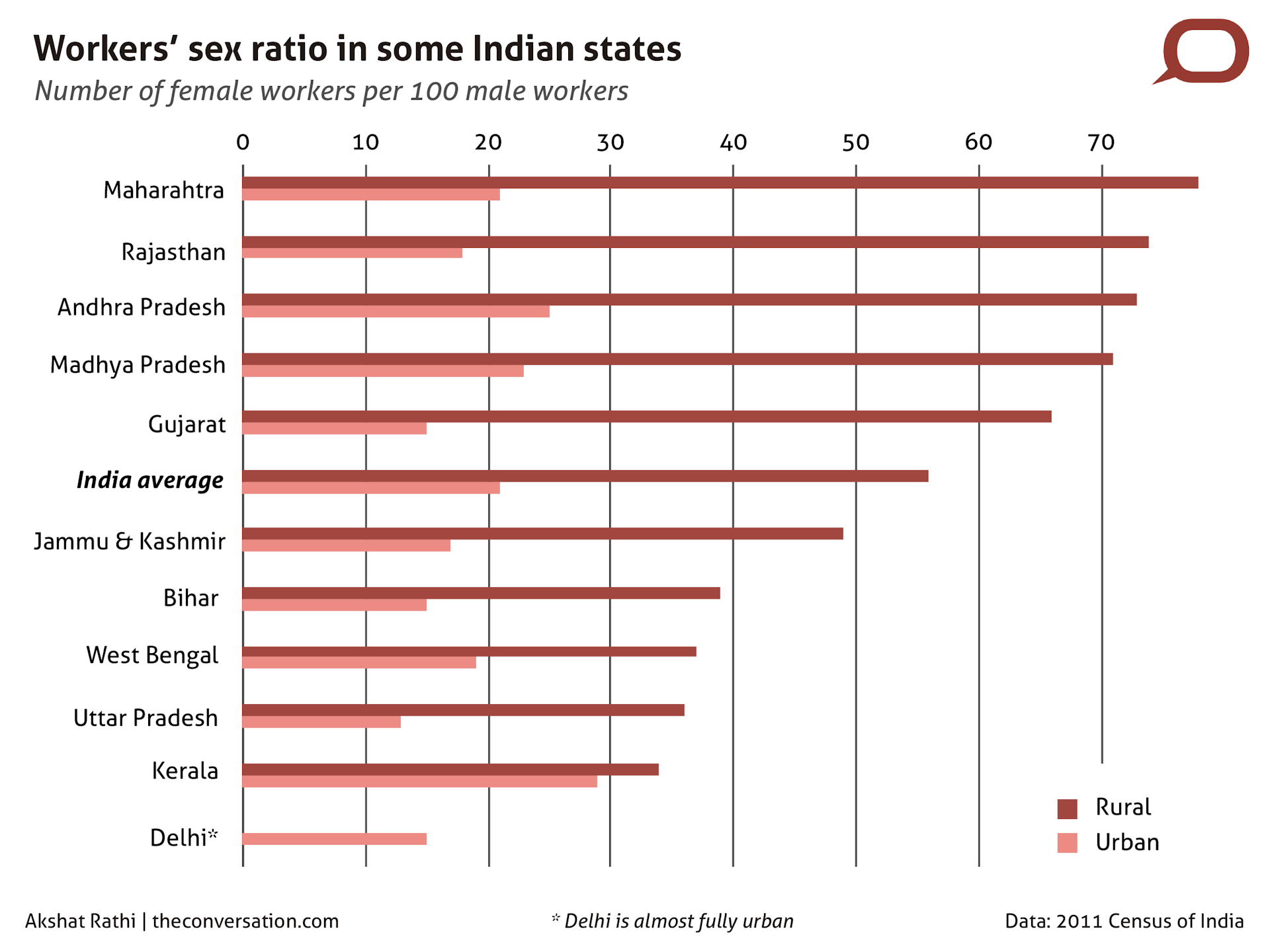The Sham of Gender Equality
“India is a growth Story” - If you are aware enough, you would believe this to be true. If not, you might have at least heard about it in some talk about India, or some article in a newspaper. If not, go and see the statistics. Post the 1991 economic reforms, we have tried to adapt to capitalism. What used to be an economy with a 2-3% growth rate, it became an economic powerhouse on the global stage. It earned the moniker of the world’s fastest-growing major economy in 2017, maintaining GDP growth above 7% p.a. since 2011-12.
Today, if we don’t see a 7% GDP growth rate, we start blaming the economic policies of the government. We are hungry for economic growth. A lot of focus is in that area. No matter what you feel about the current government, no matter if we witness a negative growth rate which is the 6th time it’s happening (Earlier contractions were in FY-1958, FY-1966, FY-1967, FY-1973, and FY-1980), we all know we will still grow. We will keep growing for at least the next 30-40 years. This projected ~10% contraction is not a big surprise. Our growth rate is skewed, we largely depend on services. And there is a trend which is worrying. If you look at the figures in the chart below, you will see that as time passes, we are increasing our dependence on services.

Find more statistics at Statista
We have all heard that India is an agricultural country. This is indeed a false statement in the current context. The contribution of Industries in Indian GDP figures has declined from 31% in 2009 to 24.88% in 2019. DO NOT confuse it with the contraction of industries in India. In 2009, India’s nominal GDP was $1.341 Trillion, 31% of that will be around $0.416 Trillion. At the same time, in 2019, India’s nominal GDP was $2.875 Trillion, 24.88% of that comes out to be $0.715 Trillion.
source: tradingeconomics.com
So you see, there is growth, but the growth of the service sector outperforms it. And not just that, the growth of the agricultural sector is also less than the national average. So what makes India a growth story?
Indian Growth Conundrum
Take a wild guess of the growth rate of the Agriculture sector of India. We call ourselves a country of farmers. I will give you a discount, guess the number from 2017 when the economy was strongest ever. Do you have a number in mind?
Okay, hold your breath. Here comes the number. The government of India states this in a report by Ministry of Finance and I quote:
This is on account of lower growth in ‘Agriculture & allied’, and ‘Industry’ sector, which is expected to grow at 2.1 percent and 4.4 percent respectively. In 2017-18, the service sector is expected to grow at 8.3 percent, as compared to 7.7 percent in 2016-17. Within the services sector, only the growth of the ‘Public administration, defense & other services’ sector is expected to decline in 2017-18.
It is 2.1% at it’s best. In tight years, it goes below 2%. At the same time, the Industry sector grows at 4.4% (at its best). These numbers look like the pre-liberalization era. Also, look at how sharply the services sector is growing, and the only sub-sector that does not grow in services is the Public administration, defense & other services. And it’s all from the Government of India report, I am not under/overstating anything.
With such an enormous dependence on the Services Sector (which was the major victim of the COVID19 caused depression), it was indeed visible from the very beginning that there will be major depression.
Is it all bad?
NO!
There’s no better answer. The last 2 months have seen two Indian startups cross the $1 Billion Valuation mark. India saw a gigantic VC funding in September. Over $1.5 Billion was pumped into several Indian startups by a range of Venture Capitalists and Angel Investors.
The future looks a little bit hazy. I can not say where we are heading. But I think there is one data point which we all are overlooking. I recently listened to a podcast by Kunal Shah, the founder of CRED, where he mentioned a point about the Indian Urban Labour Force.
The Sham
After looking at the growth figures, we feel positive. For those of us who have studied economics, we know it’s just a demand-supply game.
But do you know why we are not usually able to instill demand in our economy? One of the major reasons for that is because the services sector, which is mostly an urban business, and where only 30% of Indians are working is mostly patriarchal. And this constitutes more than 50% of the Indian GDP.

Find more statistics at Statista
This leads to only one person in the family earning. This leads to the mentality of saving and not spending. Imagine what would happen if both of the members were earning. How much more money could the family spend.
Yes! I know you are questioning all the events that happened in the placements of your college, how females were ostensibly preferred over male candidates. I know you are questioning all the female hiring that several companies do. But let’s stop for a moment and keep all our prejudices aside, keep all our assumptions, excuses aside, and look at the data.
Please note that this does not mean that rest of the sectors are gender-neutral.
The Year 2017 was indeed amazing for the Indian Economy. For India’s women, however, the year 2017 was significant for another reason – it was the year in which India’s female labor force participation rates (FLFPR) fell to its lowest level since Independence. World Bank (2017) notes that India has amongst the lowest FLFLPRs globally, with only parts of the Arab world being lesser. Do you understand what that means?

This exodus is not sudden, rather women’s participation in the labor force has shown a consistent decline over the last seven decades (above figure). The FLFPR peaked at 33% in 1972-73 and showed a decline till 1999-00 when it touched 26%. At 17.5% in 2017-18, it is at the lowest ever in Indian history. This presents a queer conundrum – why is it that a country seeing considerable gains in female education, remarkable decreases in fertility rates, and increasing economic growth is not seeing greater participation from women in the workforce?
And wait, it gets worse.
Urban < Rural ?
The heading seems inappropriate from all societal measures. We tend to believe that everything Urban is better than Rural. But this is not true. Rural Women Participation in the Labor Force is more than Urban Women. If you think about it, it is fairly easy to understand why. A lot of women in rural areas have largely been undertaking labor-intensive, home-based, and informal work, concentrated in low-productivity sectors. The proportion of rural women working in agriculture fell from 88.1% in 1977-78 to 73.2% in 2017-18, even as the corresponding decline for rural men was 80.6% to 55% over the same period. See this interesting plot:

For urban women, the service sector has become increasingly significant, with its share in employment rising from 35.7% in 1977-78 to 60.7% in 2017-18. In this sector, women have become concentrated in professions such as teaching and nursing, which offer only limited scope for career progression. Unlike men, neither urban nor rural woman could significantly increase their presence in the secondary sector.

The number that should worry us the most!
Let’s first look at the 2011 data before going further:

I would also like to put forward one more statistic, to show how bad the condition is. If we rank all the countries in the world by the percentage of women in the labor force in those countries, there are only 9 countries who fall behind India. I would very much like to name those (hint: think about the countries which you think should be there, then read the list again, get shocked, read the list once again.)
These rankings are by the decreasing rate of female participation in labor forces.
- India
- Egypt
- Morocco
- Somalia
- Iran
- Algeria
- Jordan
- Iraq
- Syria
- Yemen
I can read your mind. You are definitely thinking about a few countries which you thought would be in this list, but they aren’t. Have a look at a recent tweet by Kunal Shah:
Less than 10% of Urban Indian women work. It’s lower than Pakistan and Bangladesh.
— Kunal Shah (@kunalb11) June 2, 2020
Yes. We fall behind Pakistan, Bangladesh, China, and even Saudi Arabia, where women got to vote in elections for the first time in 2015. We are behind countries where women did not have the right to drive a vehicle until recently. Just think about that!
One other important point to be considered here is this rate is declining every year. The problem is rather not that bad if the rate is constantly bad. The problem is that it keeps getting worse. There are these usual reasons that you can think of why it is low, but I went ahead to think about the reasons why the rate declines every year!
I would like to add another interesting fact here, I know today, I have put a lot of numbers in front of you, but I am worried here. We have around 23 unicorns (Startup Valued over $1 Billion, assumed to be successful startups) in India. Out of collective 114 founders of these 23 unicorns, 109 founders are male, and only 5 of them are women. This is less than 4.5%.
Why?
To be honest, I don’t know for sure. From all the research I did, I found a few reasons but those seemed to be there in countries who were doing better than us. But this is what I have:
Declining Rate shows more women are leaving Jobs
So, this is quite straightforward. More women leave jobs every year as compared to the number who are joining fresh. We have to understand why that is. A few reasons come into my mind, of course, I am not the person who has faced these problems and I am mostly speculating, reasoning.
-
Decline in Joint Families : While we feel that the decline in joint families has made women more able, that might not be true. Of course, no data can back this hypothesis as of now, but the decline is something that can be explained by this. We used to have our parents staying with us in the pre-2000s all the time. When couples decided to have kids, women could work, because there were people at home to take care of their kids. As families become more and more nuclear, this factor goes away. As for our societal beliefs that it is the women who have the “moral” responsibility of taking care of the kids alone, women quit their jobs as soon as they conceive.
-
Marriage : As more and more people are migrating to urban areas, and India is developing urban areas at rates like never before, as soon as a girl gets married it’s more likely that her husband will have a job in a different city/in the different end of the same city. And this becomes a blocker. And a lot of women leave their jobs at this point in their life.
I feel there are 100 different reasons too, I haven’t listed the ones, which are also true for the stagnant women labor participation rate. I think we are just not understanding what the trends are. We are trying to solve the issues that just make the curve go flat. But it’s not flat, it’s decreasing like crazy. We need new solutions, we need people to understand this. We need stereotypes to be broken.
We need more and more women in the working labor force. It doesn’t hurt men’s opportunities, it has benefits that can instill demand in the economy! We can make India reach the $5 Trillion Economy goal in a really meaningful way, where we would be less vulnerable. Where we would be stronger than ever. We are awaiting a big change in the way we think. While the current feminism that is present in social media is very much required, there has to be a change in the very definition of it. We need to give this a voice as soon as possible. We don’t have a lot of time. I hope the graph sees multiple upticks in upcoming years. We require women to be in our workforce.
I know this was too long. I know you would be able to see 100 things wrong about this issue that I did not even mention. But I appreciate you reading this. Thanks for reading. If you would like to have a conversation about this, maybe understand my point better, educate me about this, tell your experience, drop me an email (hello@shreyasb.com). I will be very happy to talk about it.
Special Thanks to Akshita Jain, Shreya Lanjewar who helped me with this.
A very interesting report on Working Urban Women of India from 1961 : Read here
Comments